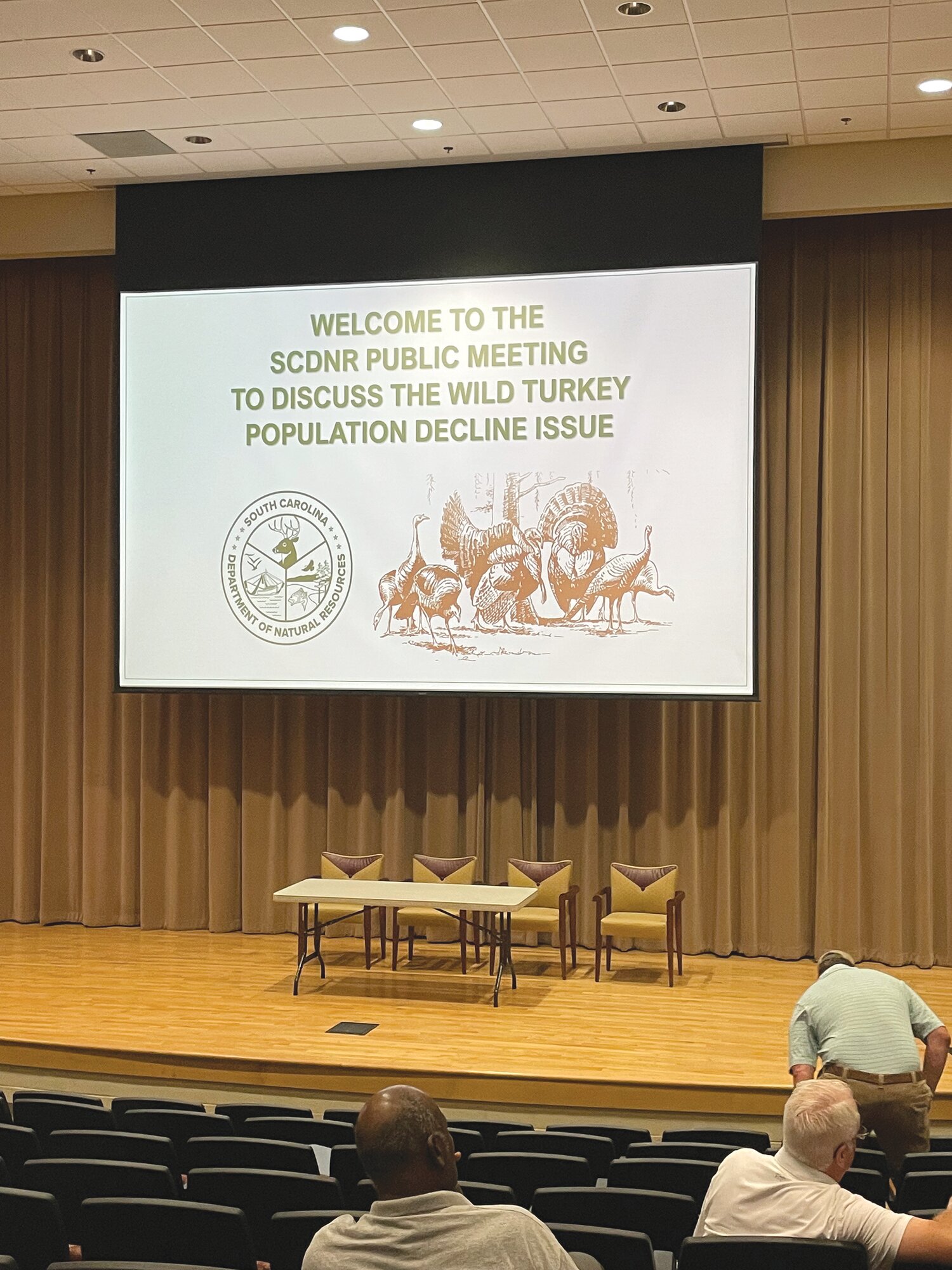Sumter outdoors columnist Dan Geddings: Wild turkey management options
Sumter outdoors contributor
The South Carolina Department of Natural Resources has been hosting public meetings around the state to discuss concerns about declines in wild turkey numbers and options to address these concerns.
SCDNR has heard from turkey hunters, landowners and members of the General Assembly with concerns about decreasing turkey numbers, lower reproduction and declining harvest across the state. These issues are not unique to South Carolina and are occurring across the Southeast.
At the meetings, SCDNR has presented available data and received comments and questions from hunters. This input from the public combined with harvest data, brood survey data and research findings will be used to develop recommendations for the S.C. General Assembly for possible legislative changes to seasons, bag limits and methods of take for wild turkeys.
Any potential changes would occur no sooner than the 2024 legislative session and would not go into effect until the spring of 2025 at the earliest.
There will also be a video presentation and opportunity to submit comments on the SCDNR website through early August. Following the meetings and public input, SCDNR will conduct an online survey to assess public opinions and preferences for various management options.
The final public meeting will be held at 6:30 p.m. Tuesday, Aug. 1, at the Piedmont Technical College Newberry County Campus, Community Conference Center Auditorium.
On a personal note, I attended the meeting this past Tuesday at the Orangeburg-Calhoun Technical College. There were about a hundred people at the meeting. The SCDNR biologist who hosted the meeting presented a series of graphs and pages of information regarding historical data collected on wild turkeys in South Carolina since the early 1980s.
The general consensus of the presentation was that the exact causes of the declines are unknown and there are probably many factors relating to the decline in wild turkey numbers. It was stressed that there is yet no cause for alarm, but there should be a strong effort to reverse the decline.
Regulatory change in wild turkey management is the only method that SCDNR considers available to the agency. Their position is that a later season opening, a reduced bag limit and possible changes to methods of take to include an afternoon closure, gobbler decoy restrictions and restrictions on harvest of jakes would make a positive change in the downward decline.
There was a question-and-answer session with the audience at the end of the presentation. Questions about coyotes and other predator control issues were generally dismissed as not substantial. Habitat issues were pointed out to be costly, and there seemed to be little interest from the SCDNR. However, it was pointed out that habitat improvements could be conducted by landowners. Law enforcement of wild turkey regulations was also a concern.
At the end of the meeting, a survey sheet was handed out to the audience. The data collected will be used to compile a consensus of turkey hunter opinions regarding regulatory changes and other options regarding wild turkey management.
These meetings and input from the public are an improvement in the effort to make regulatory change in wild turkey management. A few years ago, the DNR proposed changes to the regulations without any input from hunters and managers. That effort failed in the General Assembly.
I believe that good-intentioned regulatory change can help, but I think good habitat is the key. There are conservation organizations that promote habitat improvements for wildlife. There are Fish and Wildlife programs and USDA programs that offer incentives for landowners to conduct practices that benefit wildlife. These programs are geared mainly toward waterfowl and bob white quail. Perhaps there should be a program to enhance wild turkey habitats.
Reach Dan Geddings at cdgeddings@gmail.com.
More Articles to Read

